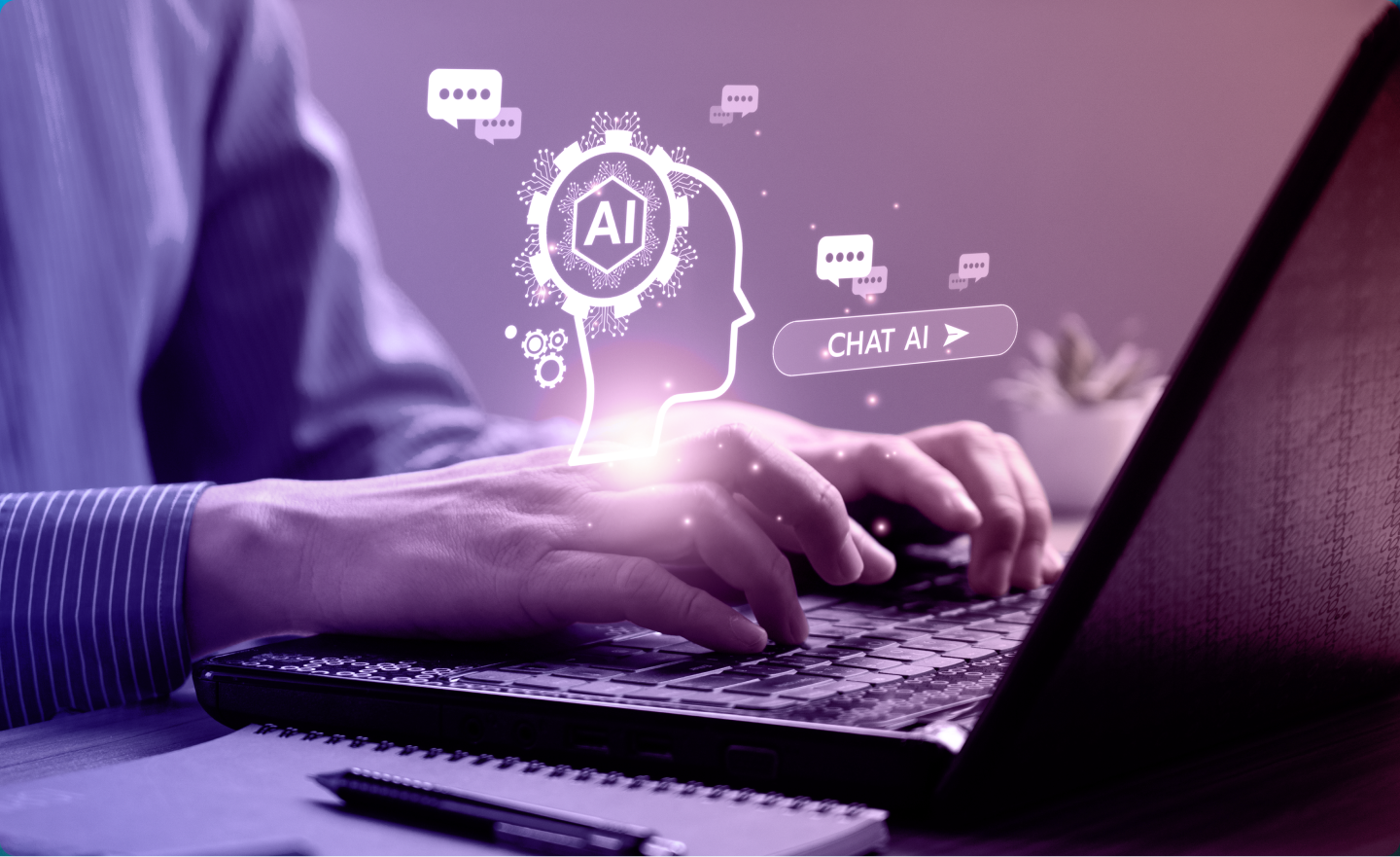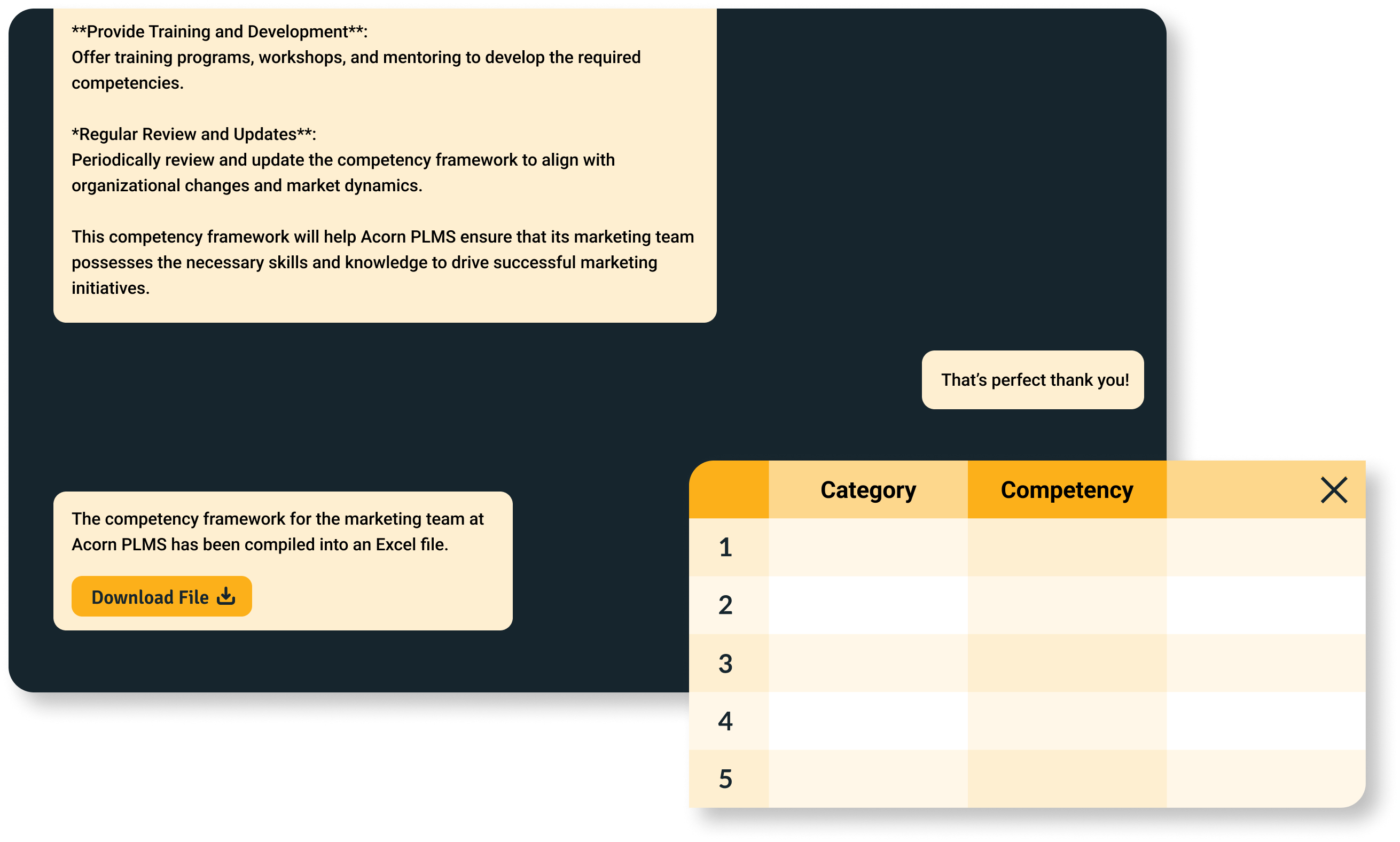Why You Want AI as a Supportive Tool, Not the Backbone of Your LMS
Reading Time:

Lead the pack with the latest in strategic L&D every month— straight to your inbox.
SubscribeWe’ll say it, because no one else is: you don’t need AI in the way you think you do.
If it feels like AI is being advertised everywhere, that’s probably because it is. Artificial intelligence has planted roots all over the place, from self-driving cars and healthcare to streaming apps and corporate training. It’s transforming how HR and L&D approach the creation and delivery of training courses—but are we really using AI at its full potential in employee training? Should we be using it at all?
In this blog, we’ll talk about the role AI should play in your learning management system (LMS) to really enhance corporate training programs for business success.
What is the role of AI in learning management systems?
Many learning management systems today use AI as a tool to transform and reshape how organizations approach learning and development (L&D). AI in LMS can enable automation, personalized learning, and data-driven insights to improve the learning experience and overall efficiency of L&D teams.
The limitations and risks of AI in the LMS
Go to any HR and L&D tech event in the last couple of years, and you’ll see vendor after vendor plugging their products as an “AI-based learning platform”, “AI-powered learning platform”, “AI-led software”, potentially even just an “AI learning platform”. Aside from being clever plays for search traffic, just what do any of those really mean?
In some cases, being AI-driven doesn’t mean much more than using a buzzword. Many use artificial intelligence in LMS content creation to build learning content from scratch.
Therein lies the problem.
To be clear: we think AI is great. It’s definitely useful and can make HR’s job a whole lot easier. But generative AI in L&D isn’t the best or most efficient use of the AI tools we have at our disposal today. People tend to go overboard, creating more content than is strictly necessary. Just because you have a large catalog doesn’t mean learners will engage with it, let alone engage with training that’s relevant for them. When we surveyed 1000+ companies, information overload from too much learning content to choose from was the second-biggest hurdle to impactful learning.
And let’s not forget that machine learning algorithms are still, well, learning. You can’t reasonably expect AI to generate completely new content from the ground up, slap it into your LMS platform, and have all that content be entirely accurate. AI in corporate training still needs human oversight, especially when it comes to sectors like health, where accuracy is paramount.
Generative AI also needs to learn from somewhere, and as more content is created and put out into the world with AI, the more AI becomes derivative and learns from itself. More than an echo chamber, that means that potentially inaccurate content goes unchecked and the more AI-based learning platforms make use of the AI-create feature, the worse it gets.
The AI LMS you need vs. the AI LMS you don’t
In short: you need an AI assistant, not generative AI.
Mama always said it’s about quality, not quantity. Almost half of learners struggle to find the training content they need to grow. Giving them more content won’t make it easier for them to find relevant content, because adding more content to the mix doesn’t solve the issue of findability.
AI that assists in finding content gets you closer to gold. Let’s skip right past course creation (though we will say using AI to outline content is a more strategic play than using it to create content from end-to-end), and get to the point of learners searching for it. Here’s where it can really assist. Acorn’s AI, for example, helps you build a capability framework based on our Capability Library, and then map those capabilities to job roles and learning content. By the time learners into the fold, it can autonomously build learning paths for every learner’s unique development needs. Minimal manual fuss from HR or L&D, and learners instantly see the content that’ll address their specific performance issues. No doom-scrolling required.
Our view is AI should get you about 80% of the way—basically, all the menial, time-consuming stuff—so you can focus on that 20% of truly strategic work. Things like writing quiz questions or course descriptions—the AI does most of the thinking for you, so you only have to tweak for organizational branding.
This way, we’re not using AI for AI’s sake, or using AI to make content for content’s sake. Think about the intention of AI assistants. What in your day-to-day could be reliably taken off your hands? What processes could be automated?

Try building your own capability framework in less time than it takes to make a cup of coffee with our Capability Assistant.
BUILD YOUR FRAMEWORKUsing a tool like Momentum, you can set a capability assessment to be triggered when employees complete training. Once the assessment is done it automatically gets sent back to the team leader, who’ll be prompted to do an assessment. They’ll then see the visual results of both performance assessments in the system used for L&D, meaning:
- They have an objective base for the follow-up performance conversation with the learner
- Learner and leader alike are seeing the same information, removing any potential bias
- The development plan is automatically generated, and again, both learner and leader can see what the plan is for progression.
On the flip side, you can use AI to push or suggest relevant content to learners. This prevents content overload from becoming a major issue in your learning platform, instead ensuring that:
- Content links to business strategy (which makes business performance part of the learning experience)
- Chosen content is relevant to learners (which continuously improves learners’ performance)
- Learners can still choose content of interest to them, fostering inherent motivation.
Key takeaways
Artificial intelligence has its place in various industries, but it’s not quite being used to its full potential in learning tech. At least, not if AI is used to create learning materials rather than provide a personalized learning experience and reduce manual administration.
AI learning platforms can—and should—have a place in the learning environment. Keep two clear tenets in mind:
- Let it do the boring work so you can do the impactful stuff.
- It’s not about creating more content. It’s about making the relevant stuff findable.